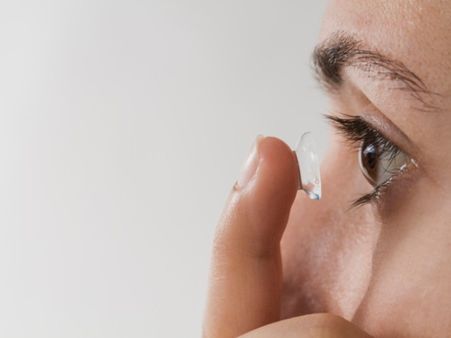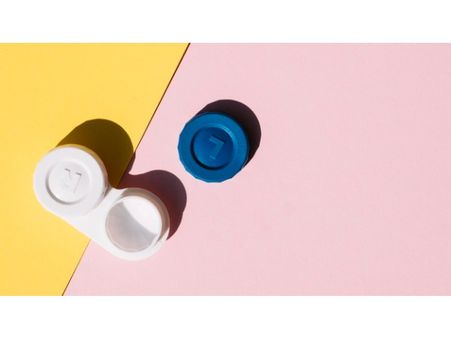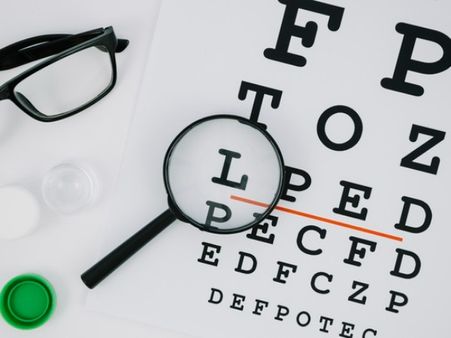Just In
- 6 hrs ago

- 6 hrs ago

- 7 hrs ago

- 8 hrs ago

Don't Miss
- Movies
 Farrey OTT Release EXCLUSIVE! Alizeh Agnihotri Reveals REAL Reason She Signed This Film, Says 'We Didn't...'
Farrey OTT Release EXCLUSIVE! Alizeh Agnihotri Reveals REAL Reason She Signed This Film, Says 'We Didn't...' - Sports
 KKR vs RR IPL 2024: Why Avesh Khan Celebrated with Sanju Samson Gloves after Phil Salt Catch?
KKR vs RR IPL 2024: Why Avesh Khan Celebrated with Sanju Samson Gloves after Phil Salt Catch? - News
 IPL 2024 GT Team News: Here's What Sai Sudharsan Said On Team's Stint In Indian Premier League
IPL 2024 GT Team News: Here's What Sai Sudharsan Said On Team's Stint In Indian Premier League - Education
 UPSC CDS 1 Exam on 21 April 2024
UPSC CDS 1 Exam on 21 April 2024 - Finance
 1:10 Split: Tata's 122-Year-Old Hotel Gaint To Declare Dividends, Q4 Earnings Soon: Technical View On Stock!
1:10 Split: Tata's 122-Year-Old Hotel Gaint To Declare Dividends, Q4 Earnings Soon: Technical View On Stock! - Automobiles
 Jeep Compass Gets More Powerful 268.3bhp Turbo Petrol Engine – Check Out All The Details Here
Jeep Compass Gets More Powerful 268.3bhp Turbo Petrol Engine – Check Out All The Details Here - Technology
 Redmi Pad SE With 90Hz Display Launching on April 23 in India; Could Be Priced for Less Than Rs 20,000
Redmi Pad SE With 90Hz Display Launching on April 23 in India; Could Be Priced for Less Than Rs 20,000 - Travel
 From Coconut Breaking on Head to Men Dressing as Women: 12 Unique Indian Rituals Explored
From Coconut Breaking on Head to Men Dressing as Women: 12 Unique Indian Rituals Explored
Do You Use Contact lenses? Then You Should Read About Contact Lens Solution Toxicity
As the name suggests, contact lens solution toxicity occurs in people who wear contact lenses. The condition or a type of severe irritation stems from improper contact lens wear or poor contact lens hygiene [1].

The irritation can be caused by the contact lens solution (the active ingredients in it) or from the place where the active ingredients are dissolved in. Contact lens solution toxicity can also develop as a result of an adverse allergic reaction to the solution and the ingredients [2].

What Causes Contact Lens Solution Toxicity?
The condition is mainly caused by contact lens solutions, such as the following [3]:
- Cleaning solutions
- Rinsing solutions
- Disinfecting solutions
- Multipurpose solutions
- Rewetting solutions
- Artificial tear products

It can also develop due to contact lens overwear (often sleeping in contact lenses) leading to corneal hypoxia. If one develops eye irritation after months, a likely culprit is the contact lens solution they use.

What Are The Symptoms Of Contact Lens Solution Toxicity?
Doctors assert that although there will not be any sudden distinct changes in the eye that would point only to a toxic reaction, there can be certain signs and symptoms. Patients with contact lens solution toxicity can experience any or all of the following symptoms [4]:
- Pain
- Redness of the eye
- Discharge from the eyes
- Itching
- Inability to wear the contact lenses
- Tearing
- Decreased or blurred vision
- Foreign body sensation
Note: If the symptoms appear when you use a particular type of eye solution, take note. Also check if the solution has had any changes, such as the company changing the ingredients, or a new label that says ‘new and improved.'


Who Is At The Risk Of Developing Contact Lens Solution Toxicity?
More than 20 per cent of contact lens wearers experience reactions to contact lens solutions at some time [5]. In most cases, this happens when the person switches to a new solution (brand or type).
A change in the formulation of the solution used can also lead to the risk of developing contact lens solution toxicity [6]. People who also have problems with the fit and the comfort of their contact lenses are also at the risk of contact lens solution toxicity.

Common allergies that affect the eyes, such as dust allergy can also increase the risk.

What Are The Complications Of Contact Lens Solution Toxicity?
- Corneal hypoxia, which can lead to a rapid decline in vision associated with ocular pain, redness, corneal scarring and light sensitivity [7]
- Reduced vision
- Severe pain in the eyes
- Light sensitivity
- Reduced vision

When To See A Doctor
If you notice any or one of the following, it is important that you visit a doctor immediately.
- Progressive pain
- Progressive vision loss [8]
- Thick or pus-like discharge
- No improvement or worsening of your eye condition after 24 hours without the use of contact lenses or solution

What Are The Treatments?
The doctor or the optometrist will check whether the contact lenses are ill-fitting. You may be prescribed both eye drops and ointments depending on how severe the reaction is. Further treatment options will be discussed if there are any other associated problems with eye irritation [9].

How To Manage Contact Lens Solution Toxicity?
The first and foremost step is to stop using the product immediately and remove the contact lenses that are causing the irritation [10]. In addition, the following steps may help provide some relief from the irritation and pain.
- Rinse your eyes gently with cool water
- Warm compresses for aching, pain or discharge
- Use cold compresses for itching and swelling
- Do not rub the eyes, so as to reduce the irritation caused by the reaction to the contact lens solution
Once your eyes are free from the irritation, discuss with your doctor and switch to other brands or formulations of contact lens solutions.

On A Final Note…
Always check expiration dates on your contact lens solutions and never use expired products. Handle the solutions carefully as per the instructions and be careful not to contaminate the tip of the bottle or can, as contamination can lead to eye-related complications.
-
 make up tips10 Eye Make-up Tips For Contact Lens Users
make up tips10 Eye Make-up Tips For Contact Lens Users -
 wellnessContact Lens Or Glasses: Healthier Choice?
wellnessContact Lens Or Glasses: Healthier Choice? -
 wellnessContact Lens Safety Tips
wellnessContact Lens Safety Tips -
 disorders cureBausch&Lomb's New Vision
disorders cureBausch&Lomb's New Vision -
 disorders cureContact Lenses With Vitamin E, For Glaucoma
disorders cureContact Lenses With Vitamin E, For Glaucoma -
 pet careLioness Fitted With Contact Lenses!
pet careLioness Fitted With Contact Lenses! -
 disorders cureSoon, Contact Lenses That Can Deliver Drugs Into The Eye
disorders cureSoon, Contact Lenses That Can Deliver Drugs Into The Eye -
 make up tipsHow To Apply Make Up When Wearing Contact Lenses?
make up tipsHow To Apply Make Up When Wearing Contact Lenses? -
 make up tipsMatch Your Make Up With The Saree
make up tipsMatch Your Make Up With The Saree -
 beautyInternational Women's Day 2024: 7 Captivating Makeup Ideas To Empower Your Beauty
beautyInternational Women's Day 2024: 7 Captivating Makeup Ideas To Empower Your Beauty -
 healthWhat Does Red Eye Mean In Photos? Do You Know It Can Save Your Life?
healthWhat Does Red Eye Mean In Photos? Do You Know It Can Save Your Life? -
 healthWorld Sight Day: Tips To Safeguard Your Eyes At Work
healthWorld Sight Day: Tips To Safeguard Your Eyes At Work


 Click it and Unblock the Notifications
Click it and Unblock the Notifications





